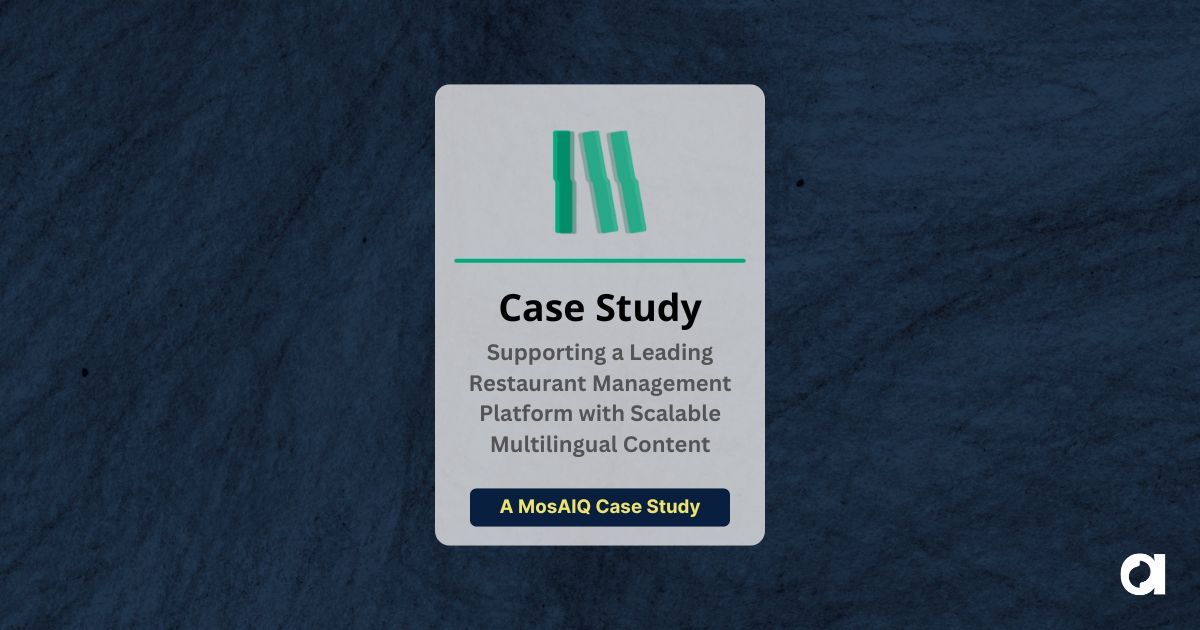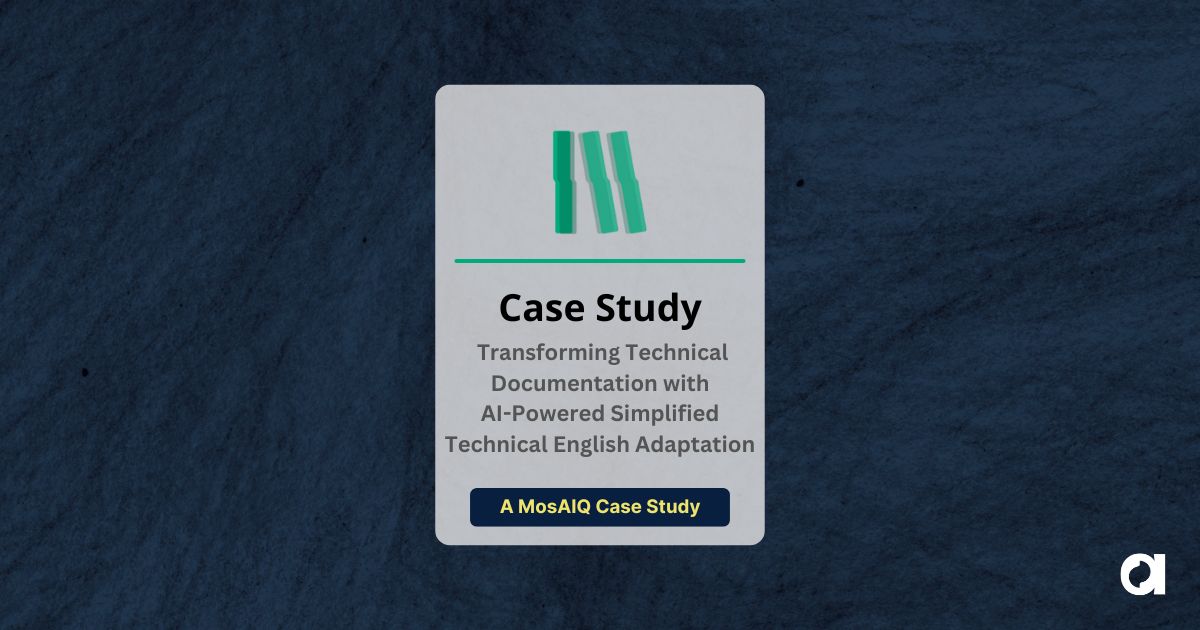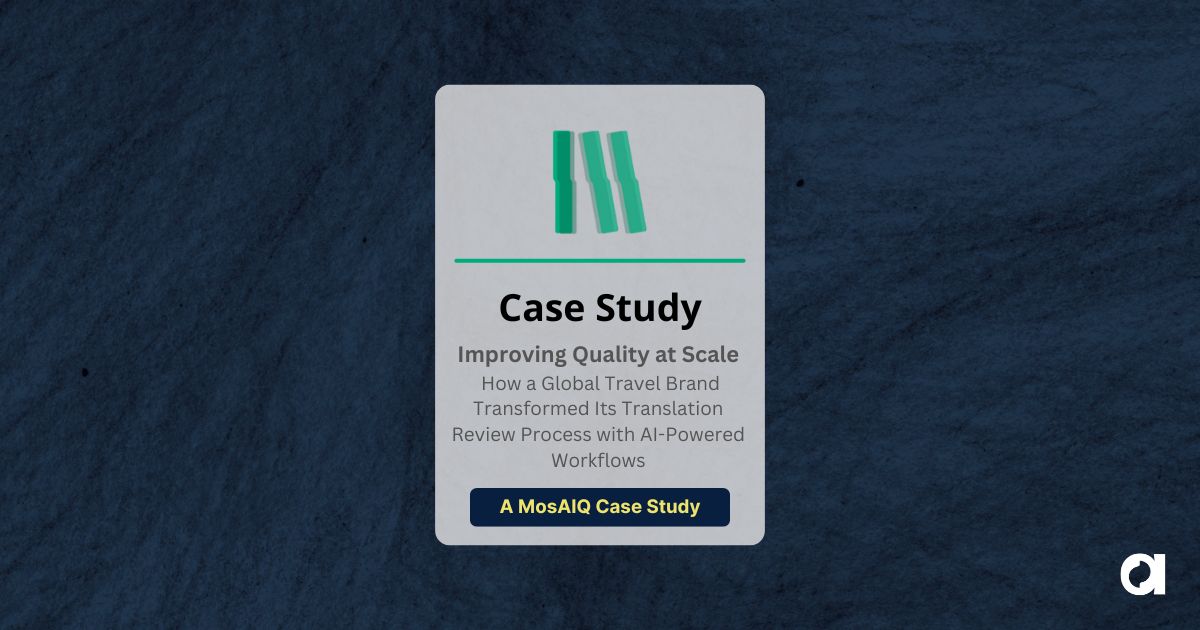For years, language access in healthcare has been handled from the point of view of compliance. It was something that had to be done, but not necessarily something built into how care was delivered or measured. Today, that’s starting to change.
More healthcare leaders are now taking a closer look at the connection between communication and outcomes. They’re asking whether patients understand their care plans, whether staff are spending time clarifying basic information, and whether translated content helps patients or health plan members take action. These aren’t just questions of equity. They’re operational questions with measurable impact.
According to Leslie Iburg, Director of Global Sales for Healthcare at Argos Multilingual, this shift is already underway. In her role advising providers, payers, and digital health platforms on multilingual strategy, she sees first-hand how translation and language access drives measurable change.
“Healthcare organizations are looking at the results of their language efforts versus simply checking a compliance box,” she says. “They’re seeing a direct link between language access and higher satisfaction, better health outcomes, and stronger retention.”
When healthcare organizations approach language access as a strategic investment, it delivers value in ways that are measurable and meaningful. Language access reduces costs, improves efficiency, and strengthens the systems that support care. But its impact also shows up in more human ways, such as clearer communication, stronger trust, and outcomes that reflect the needs of every individual.
Now, the question becomes: what does language access look like in the real world?
Framing the Conversation: Language Access as Strategy
Laws like Section 1557 of the Affordable Care Act made meaningful access for individuals with Limited English Proficiency a requirement, and many healthcare organizations did just enough to comply with these standards. But now healthcare leaders are starting to approach language access differently. More are asking what’s possible, not just what’s required.

“Healthcare still needs compliance and there’s no way around that,” she says. “But I’m seeing more and more teams focus on the results of their language efforts rather than just meeting requirements. When organizations expand into additional languages or translate more than just what’s required, they’re seeing a direct tie to better outcomes.”
The Hidden Costs of Miscommunication
When patients and providers don’t speak the same language, consequences ranging from missed appointments to avoidable readmissions ripple through the entire healthcare organization. An individual may skip care entirely because they don’t understand what their policies cover or how to access treatment. Iburg puts a number to this problem.
“The cost for the healthcare industry due to language barriers affecting LEP populations is devastating, estimated to be more than $3 to $4 billion annually,” she says. She also points to broader findings from Deloitte, which estimate that health inequities in the U.S. add roughly $320 billion to healthcare spending every year.
Despite this financial toll, language services are still often treated as an afterthought. Iburg regularly hears concerns about the cost of language services with little understanding about the longer-term effects. Gaps in communication increase call volumes and reliance on emergency care, leaving staff to manage confusion that could have been avoided with translated patient-facing materials.
Improving language access helps healthcare organizations function more smoothly and efficiently. It lightens the load on administrative teams, shortens the path to care, and makes communication more effective.
What ROI Looks Like in Practice
When healthcare organizations invest in language services, the results are quickly apparent. They’re visible in reduced support calls, improved satisfaction scores, and higher enrollment numbers. But the benefits also run deeper, affecting trust, care adherence, and long-term engagement.
According to Iburg, one regional health plan decided to translate its website into two additional languages beyond the Centers for Medicare and Medicaid Services-required threshold to better serve its community.
“Within three months of launch, they saw website traffic nearly double. Enrollment went up by double digits, and operator call time dropped by more than 30%,” she says. “This also reduced interpreter costs.”

The same holds true for digital health platforms, especially those focused on mental and behavioral health, where early trust and clarity are important. If the first touchpoint is available in someone’s preferred language, especially when the topic is sensitive, adoption and engagement tend to go up. Providing translated, culturally appropriate information can make the difference between someone signing up for a wellness program or deciding not to return.
Language access also affects quality metrics, according to Iburg.
“It’s surprising how many measures outside the obvious ones like experience and satisfaction are affected by language,” she says. “The return on investment for language services reaches across the healthcare journey. We’ve seen gains in preventive care use, medication adherence, and screening rates when multilingual access is in place.”
Automation Isn’t Enough Anymore
Efficiency matters just as much as accuracy in healthcare communications. When translation workflows are slow or overly manual, content delivery can be delayed. Open enrollment forms, appointment reminders, consent forms, and patient education materials all need to be translated quickly to meet sign up deadlines and patient needs.
Iburg says the biggest gains come from machine translation post-editing (MTPE) with human oversight, which combines the speed of machine translation with the accuracy and oversight of an experienced qualified human linguist. Working with a translation partner that can securely leverage AI and large language models (LLMs) along with qualified healthcare translators can further enhance productivity.
“Organizations want the speed and automation of AI and machine translation because they need a lot of content translated and timelines are tight,” she says. “But healthcare has no margin for error. It has to be the right mix of automation and AI with qualified linguists reviewing the work to ensure quality.”
Iburg notes that early planning matters to meet deadlines. Translating documents, websites, portals, and other digital tools requires preparation to see the most benefit.
Accessibility Is a Core Component of Language Access
If content can’t be used or understood by individuals with disabilities, such as those who are blind or low-vision, hard of hearing, neurodivergent, or dealing with cognitive impairments, it still falls short.

Iburg stresses that accessibility needs to be addressed while documents and websites are being translated, not after.
“Accessibility is absolutely critical to the entire healthcare journey,” she says. “One in four individuals in the U.S. identifies as an individual with a disability. That means materials have to be usable in formats like large print, braille, or Section 508-compliant digital versions, whether it’s in English or translated.”
Accessibility and translation are often managed on separate tracks. But they rely on the same decisions about content, format, structure, and delivery. Teams that bring them together create materials that are easier to produce and more effective for their users.
Making the Case Internally
Even when the benefits of language access are clear, getting buy-in for funding isn’t always easy. Iburg says the most persuasive arguments are grounded in data. Instead of framing language services as an expense, she recommends tying it to the goals leadership is already tracking, such as retention, operational efficiency, or compliance performance.
“Real-world examples and clear results always move the needle,” she says. “Translation isn’t just about doing the right thing. It reduces administrative burden, lowers customer service call volumes, improves care, and increases satisfaction scores.”
Teams can start by reviewing existing metrics through a language lens. That might include tracking how translated digital content affects support calls or comparing wellness participation by language preference.
When leadership sees that language access supports the same outcomes they already care about, the conversation shifts. Language services stop being treated as an extra expense and instead become a key part of the organization’s performance strategy.
How Strategic Investment Pays Off
Iburg encourages healthcare teams to examine what they’re already doing. If a process feels slow, repetitive, or overly manual, it’s probably not going to work well in multiple languages. If patients drop off after using a portal or support requests spike after a content release, it’s a signal worth investigating.
“Many organizations are already measuring things like satisfaction, retention, or screening rates,” she says. “They don’t always realize that language is influencing those outcomes.”
Healthcare teams that treat language access as a part of their infrastructure tend to see the strongest returns. That includes coordinating with other departments and measuring results against the same goals they already use to evaluate care, communication, and efficiency.
It starts by paying attention to where communication slows down, where teams repeat work, or where individuals disengage. These are the places where a smarter language access strategy creates real value.
“Language access is an integral part of operational excellence and delivers better outcomes for the individual,, and the organizations supporting them” says Iburg. “There are so many ways the right partner and approach can help teams do this well.”
This is the year to explore new and smarter approaches to do more and achieve better outcomes. Contact us to learn how Argos supports healthcare teams.
Want to learn more?
 Argos Multilingual
5 min. read
Argos Multilingual
5 min. read
Localization feedback always begins with good intentions. A translation goes out for review, the reviewer sends back changes, and the linguist incorporates them. The reviewer then asks to see the translation again. Another round follows. This time, a different reviewer flags an unrelated issue and requests additional edits. Before long, the localization project becomes an […]

 Stephanie Harris-Yee
6 min. read
Stephanie Harris-Yee
6 min. read
Guess what? You don’t need to translate content into 20 languages to have a localization problem. If your company has a website, software, or marketing content, chances are that someone outside your home market will probably read them. The real question is: will your materials work for them, or will they create problems you didn’t […]












